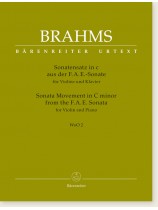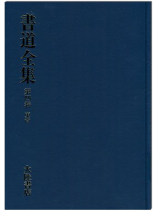Brahms Sonata Movement in C minor from the F.A.E. Sonata for Violin and Piano WoO 2
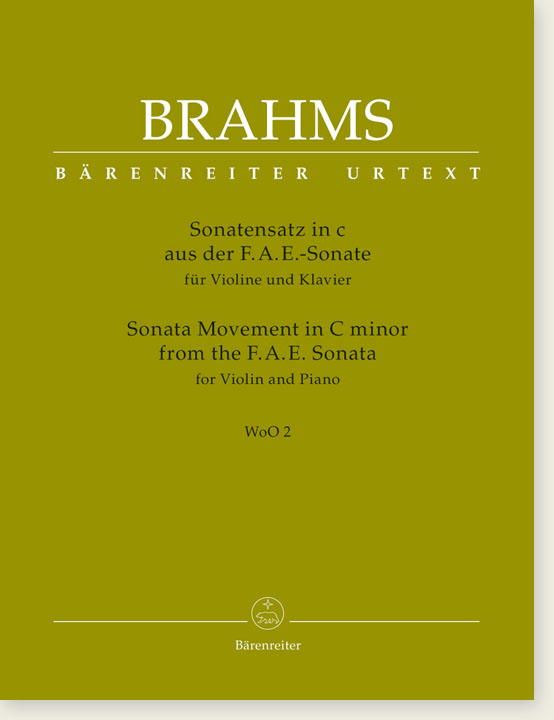
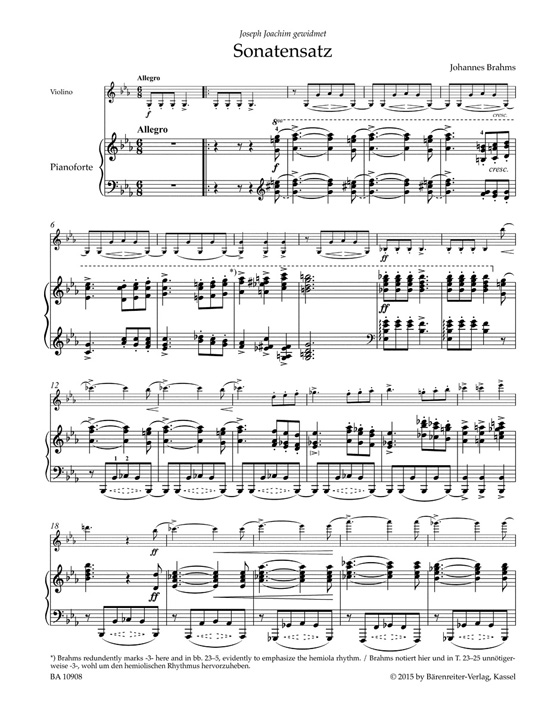
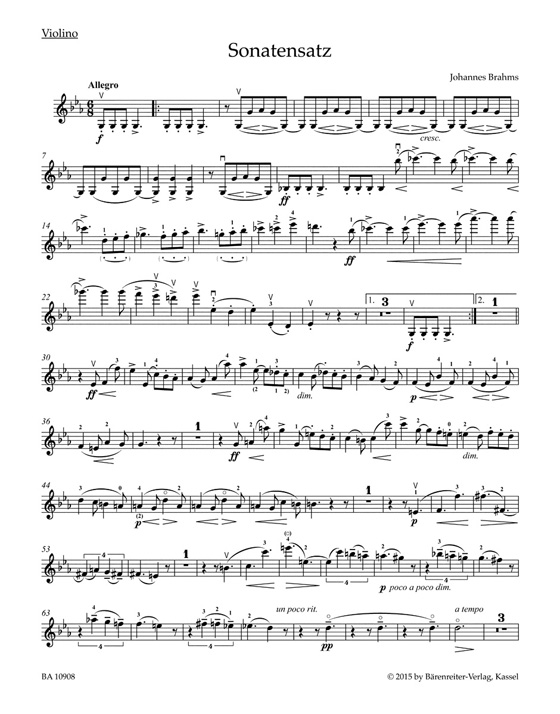



布拉姆斯與舒曼學生迪特里希共同寫給小提琴大師姚阿幸的「F.A.E小提琴奏鳴曲」,c小調小提琴詼諧曲from F.A.E.Sonata Woo 2,小提琴分譜+鋼琴伴奏譜。
- 庫存狀況: 尚有庫存
- 出版社: Bärenreiter
- 作者: Johannes Brahms
- 編訂者: Clive Brown, Neal Peres Da Cos
- 總書頁: 21
- 商品編號: BA10908
- ISBN: 9790006544462
簡介
The year 1853 was of great importance to Johannes Brahms, on a personal and also on a professional level, for it was then that he first met Joseph Joachim, Robert and Clara Schumann, all three of whom, in their various ways, were to exercise an enormous influence on his life.
During that same year, Robert Schumann, his composition student Albert Dietrich as well as Brahms decided to compose a violin sonata as a joint venture and as a surprise gift for Joachim. Dietrich composed the first movement, Schumann the second and Brahms the third. The front page of the manuscript score was inscribed by Schumann with the title F.A.E., standing for Joachim’s motto „Frei aber Einsam“ (free but lonely). Brahms seems not to have considered publishing his Allegro movement, and had the autograph remained in his possession he would doubtlessly have destroyed it, like many other compositions. Finally, in 1906, Joachim allowed the Deutsche Brahms-Gesellschaft to publish the work.
An important part of this edition is the Preface. Firstly it informs about the work's origin and publication. Truly remarkable is the unique detailed Performance Practice Commentary. Here the editors start from the premise that already a few decades after Brahms' death, a widening gulf developed between the composer's expectations and the performance practices of the early 20th century. On the basis of manifold sources which include memoirs by pupils and chamber music partners, treatises and essays, early instructive editions and historical recordings, the editors deal with key issues in understanding Brahms' notation. By a section-by-section analysis of rhythm and timing, dynamics and accentuation, dots and strokes, slurring and non legato, piano pedalling and overholding, piano arpeggiation and dislocation, string instrument fingering, string instrument harmonics and vibrato, the editors provide an indispensable assistance for a historically informed interpretation of the work.
At the same time, the edition offers an exciting and often surprising insight into musical interpretation of the German Romantic Era in general.
- A pioneering Urtext edition
- With an unmarked Urtext part
- With a second part including fingering and bowing based on the practices of contemporaries of Brahms
- With an extensive Performance Practice Commentary
- For further information on Romantic performance practice we recommend the text booklet: “Performance Practices in Johannes Brahms' Chamber Music”, BA 9600
目錄
- Sonata Movement from the F.A.E. Sonata for Violin and Piano C minor WoO 2
詳細規格
| 書籍資訊 | |
| 記譜法 | 五線譜(一般) |
| 原文語言 | 德文 |
| 特徵 | 西洋古典 |
| 古典作曲家 | Brahms, J.布拉姆斯 |
| 時期與風格 | 浪漫主義 |
| 裝訂 | 平裝 |
| 形式 | 譜 |
| 外型尺寸 | 大於A4 樂譜常用尺寸 |

